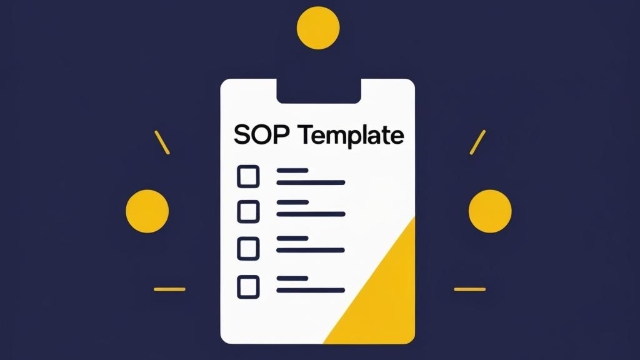

1. Purpose
Why this SOP exists and what it aims to achieve.
Example:
“This SOP outlines the steps required to onboard new customers efficiently and consistently, ensuring compliance with internal standards and regulatory requirements.”
Tip: Add a visual representation of the SOP
2. Scope
What the SOP covers—and what it does not.
Example:
“This procedure applies to all new customer onboarding processes conducted by the Sales and Customer Success teams in North America. It does not cover technical onboarding handled by the Engineering team.”
3. Roles and Responsibilities
List the personnel or teams involved and their specific duties.
Examples:
Sales Manager: Initiates the process after contract signing.
Customer Success Rep: Completes onboarding steps and follows up with the client.
4. Definitions (Optional but recommended)
Clarify any jargon, abbreviations, or industry-specific terms used in the SOP.
Examples:
CRM = Customer Relationship Management system
KYC = Know Your Customer
5. Step-by-Step Instructions
A clear breakdown of each action
Include hazards and tools or systems to be used upfront.
Use action verbs.
Add screenshots, images, videos or diagrams.
Include decision points, if-then conditions.
View Knowby's step-by-step work instructions template
6. Safety, Compliance, or Quality Considerations (if applicable)
Outline regulatory, legal, or internal compliance requirements related to the process.
Examples:
All data must be stored in accordance with GDPR standards.
Employees must complete anti-money laundering (AML) training annually.
7. References / Related Documents
Include any related policies, forms, templates, or SOPs.
Examples:
Customer Contract Template v2.1
Data Retention Policy
IT Onboarding SOP
8. Revision History
Track changes made to the SOP over time.
Knowby provides a Version History and Change Log feature that allows you to track all edits, view past versions, and roll back to a prior version if needed.
Best Practice Tips:
Write clearly and concisely (aim for a Grade 8 reading level).
Use consistent formatting for readability.
Involve stakeholders during drafting for buy-in and accuracy.
Review SOPs annually or after any major process change.